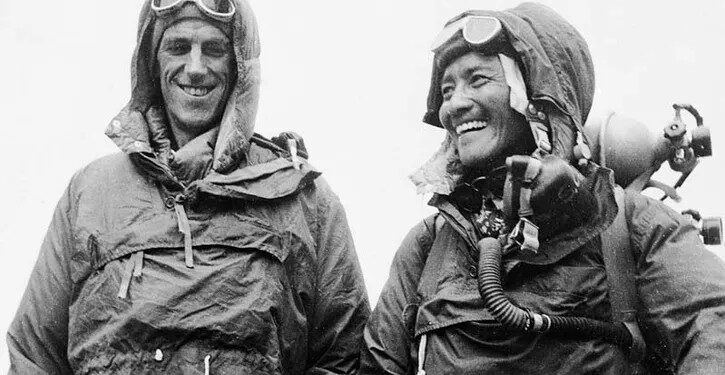Two men conquer the world’s tallest peak
At 11.30am on 29th May 1953, two figures stood triumphant atop the 29,035-foot summit of Mount Everest, becoming the first people confirmed to have reached the world’s highest point. Edmund Hillary, a New Zealand beekeeper turned mountaineer, and Tenzing Norgay, an experienced Sherpa from Nepal, had achieved what nine previous expeditions had failed to accomplish.
The historic ascent came just four days before Queen Elizabeth II’s coronation, adding to the sense of British imperial achievement. Their success was part of the ninth British expedition to attempt Everest, led by Colonel John Hunt. The timing could hardly have been more perfect for a nation seeking symbols of greatness in the post-war era.
The partnership between Hillary and Tenzing represented more than just mountaineering prowess. Hillary brought technical expertise and Western climbing methods, whilst Tenzing contributed intimate knowledge of the mountain and decades of high-altitude experience. The duo spent approximately fifteen minutes at the summit, with Hillary photographing Tenzing holding his ice axe aloft in victory.
Their route via the south-east ridge had been carefully planned and executed. Previous attempts had failed due to extreme weather, inadequate equipment, or sheer physical exhaustion. What set this expedition apart was meticulous preparation, improved oxygen systems, and the crucial decision to pair Hillary’s determination with Tenzing’s mountain wisdom.
Upon their return to base camp, Hillary famously told fellow climber George Lowe that they had “knocked the bastard off”. This typically understated New Zealand response belied the magnitude of their achievement. The news travelled swiftly down the mountain and across the world, reaching London just in time to crown the new queen’s celebration with additional glory.
The conquest of Everest marked the end of what some called the “last great earthly challenge”. For decades, the mountain had claimed lives and broken spirits. British climbers George Mallory and Andrew Irvine had vanished near the summit in 1924, leaving their fate a mystery that wouldn’t be resolved for decades.
Hillary and Tenzing’s success opened the floodgates for future expeditions. What had once seemed impossible suddenly became a goal within reach for determined climbers. However, their achievement retained its unique significance as the first confirmed summit, accomplished with relatively primitive equipment compared to modern standards.
The mountain that had symbolised the ultimate test of human endurance had finally been conquered. Yet both men remained modest about their feat, emphasising teamwork and mutual respect rather than individual heroism. Their partnership transcended cultural and national boundaries, proving that the greatest achievements often result from combining different strengths and perspectives.
The timing of their success provided Britain with a powerful symbol of national achievement, proving that the empire could still accomplish great things. As news of the summit spread globally, Hillary and Tenzing became instant celebrities, their names forever linked with humanity’s triumph over one of nature’s most formidable challenges.
Their legacy extends far beyond mountaineering. The Hillary-Tenzing partnership demonstrated how collaboration between different cultures and expertise could achieve the seemingly impossible, setting a template for future expeditions and inspiring generations of adventurers to push beyond their perceived limitations.
newshub finance



Recent Comments